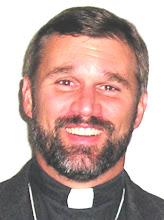Yet some time ago, perhaps a year or so ago, I called the CPH permissions department regarding use of the printed liturgy for this purpose and I was told that this information could not be supplied to me. I was told that I would have to research the various portions of the liturgy for myself to determine whether or not each portion was in the Public Domain.
This sounded very peculiar to me. I wondered why this change in policy had occurred.
I began to examine the hymnal more thoroughly than I had in the past. Lo and behold I found a big piece of the puzzle on the very first page of actual information, that is, on page 2, the Preface page.
I had never really paid attention to what this page says. I had seen it countless times and cursorily read it as well. But on this occasion I actually heard what is contained in this declaration. I was astounded.
Here is a photo of the page:
The startling portion I will quote:
We have freely used whatever we found of value and, by way of acknowledgment, have carefully indicated all sources. In turn, we freely offer for the use of others all original contributions or translations made by the committee as such or by its individual members.
This is truly astounding! For how many years did the LC–MS and CPH tell people the exact opposite?
According to the Preface to the hymnal, every portion of the hymnal has always been free to be used. This is in fact the stated purpose of the hymnal! Permission for free use of the materials is given in the Preface to the hymnal.
Back when I first desired to produce this little booklet regarding the meaning of the worship life of the Church as is so wonderfully expressed in the liturgy, back when I did this sort of work full-time and did not have to earn my living through such work as arborist services, I was misinformed by CPH and the LC–MS. (Is misinformed a strong enough term?) Even now the truth has not been clearly stated by the LC–MS and CPH personnel and leaders.
Now, however, I am happy to realize that I am free to pursue this endeavor. Now I am happily aware that this little booklet can be produced if I so desire and can find the energy over and above my other daily tasks.
In fact, I do so desire.
However, I would like to hear whether or not anyone else shares such desire with me. Are there people who would like to have such an explanation available to them? If such a booklet were made available in PDF format, and perhaps also printed format to be purchased, would anyone actually want to receive it and use it? If I go to the effort of producing portions here on the blog or at the Bride of Christ ELC web site, does anyone desire such explanations? My primary desire is for the Order of the Holy Communion, beginning on pg. 15.
Does anyone share this desire?

















1 comment:
Pastor Siems,
We appreciate your emphasis that the authoritative nature of Scripture alone (in Word and Sacraments) effects God's good and gracious will for Christ's bride, the Church.
Your desire to produce a booklet of explanation for TLH p. 15's parts has a special interest for me. I am one whom the LORD brought to faith as an adult. The divine liturgy (TLH p. 5 & p. 15) seemed alien to me. I pestered my girl friend constantly with questions: "Why is this said; why is this sung; what does this mean?" She did her best to answer me, but realized she her answers fell short.
I also noticed that the worshipers without exception knew the liturgy and creeds from memory. I seemed to be the only one holding an open hymmal during the liturgical portions. The pastor who instructed me very graciously and thoroughly answered my questions about the liturgy (John Parcher, whom the LORD called to Himself from this vale of tears a few days ago.) This knowledge satisfied my initial sense of curiosity.
Thanks be to the merciful Triune God that His means of grace call, enlighten, sanctify, and keep His children in the One true faith, even as He gathers them by those same means.
Since you are convinced that your project would benefit the worship life of the Church, may God guard, guide, and grant success to your work.
Gary Cepek
Post a Comment